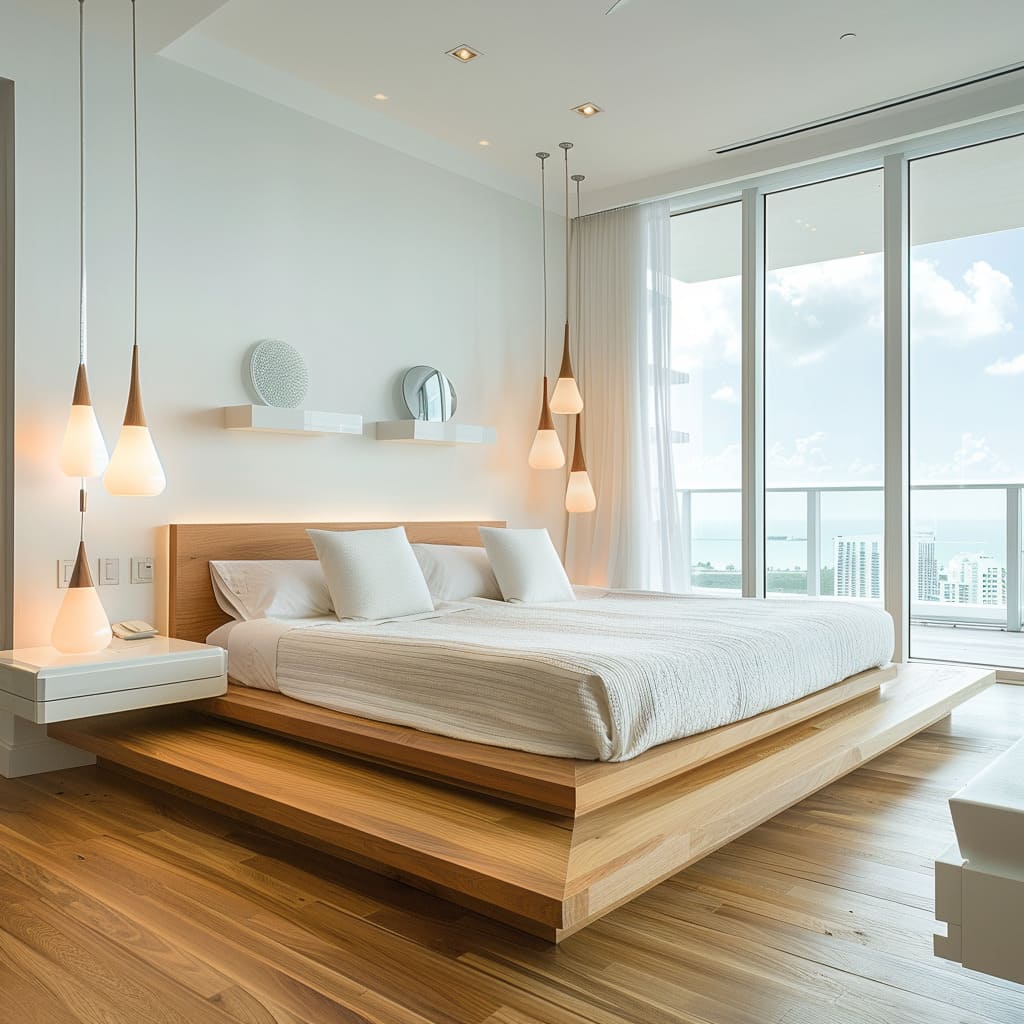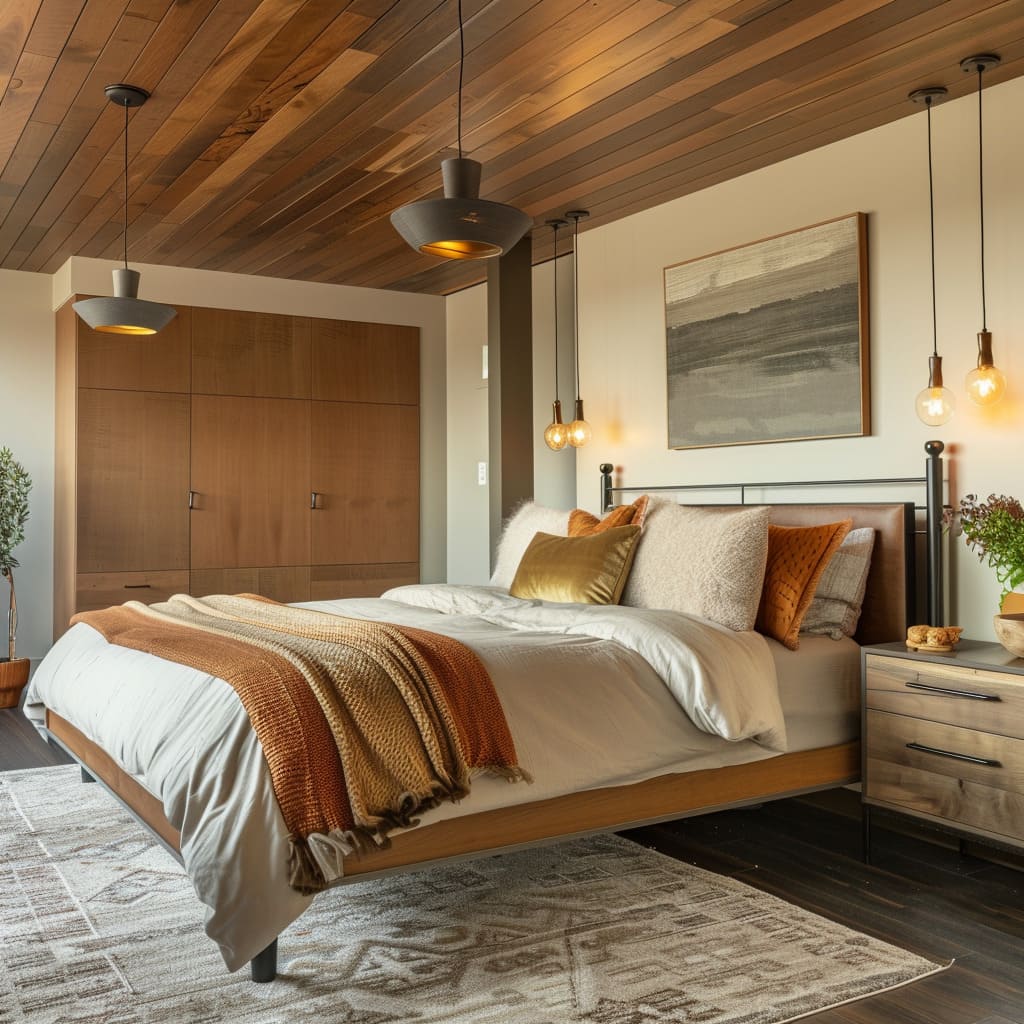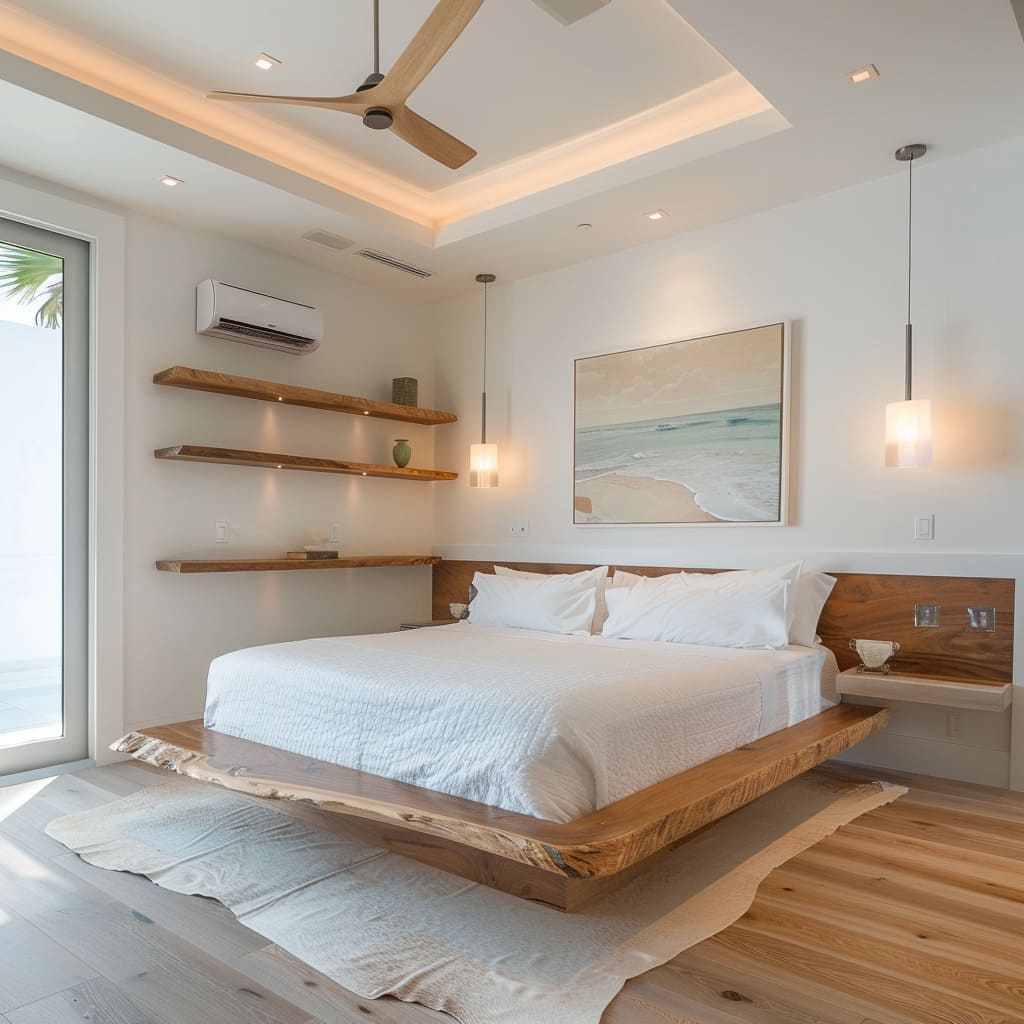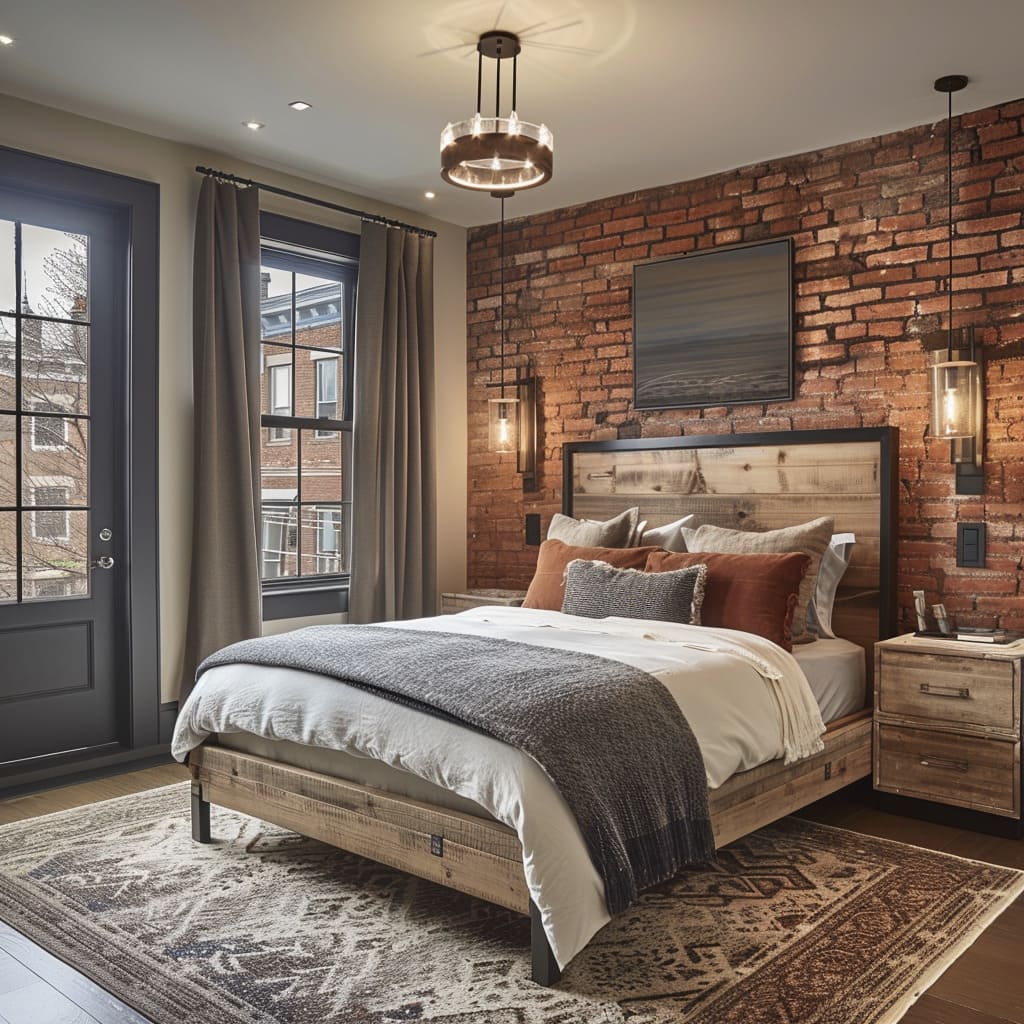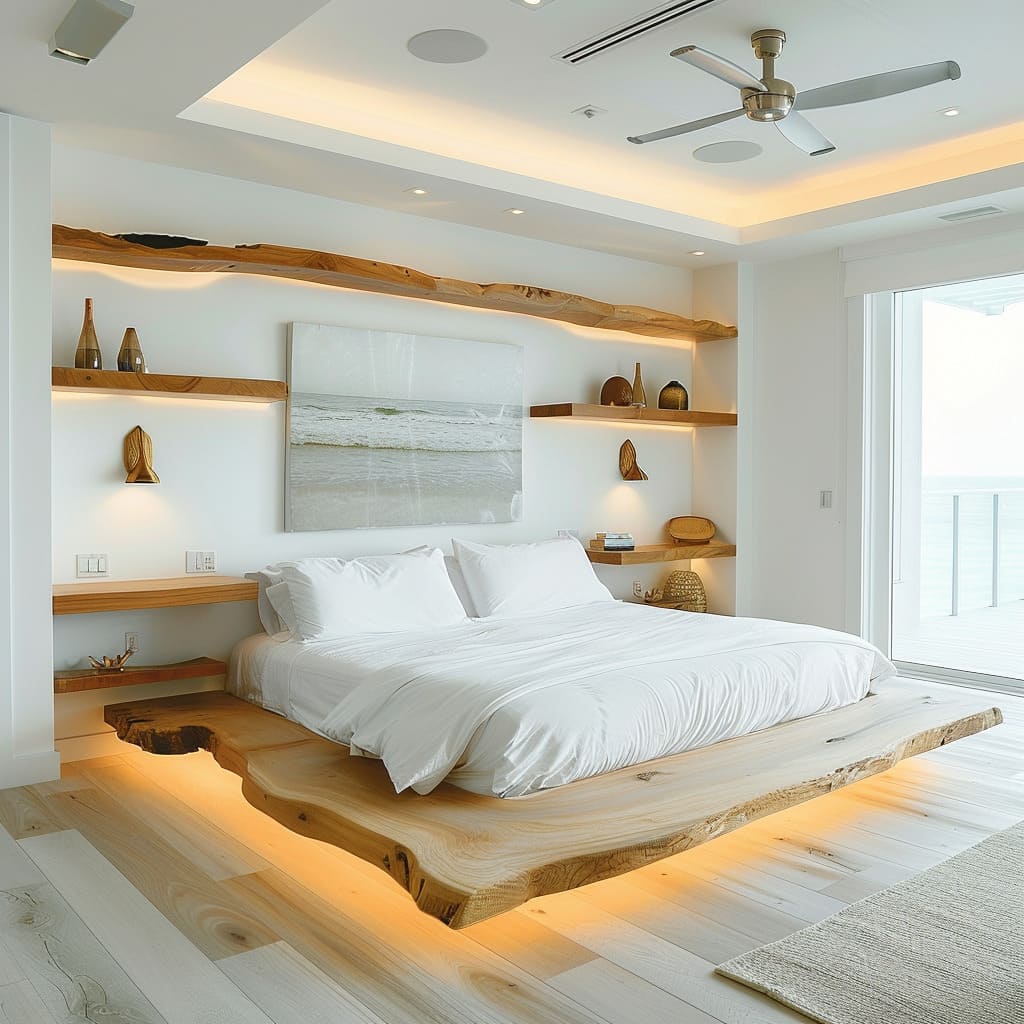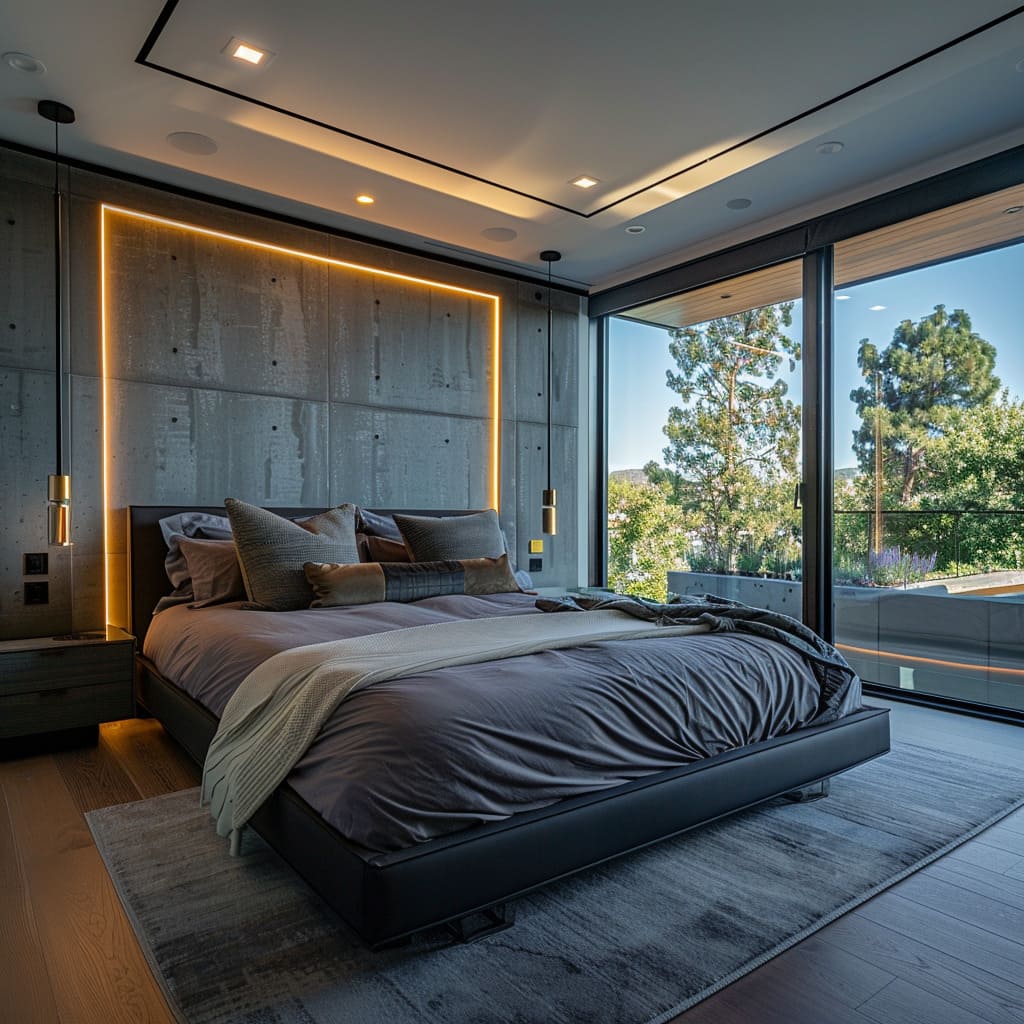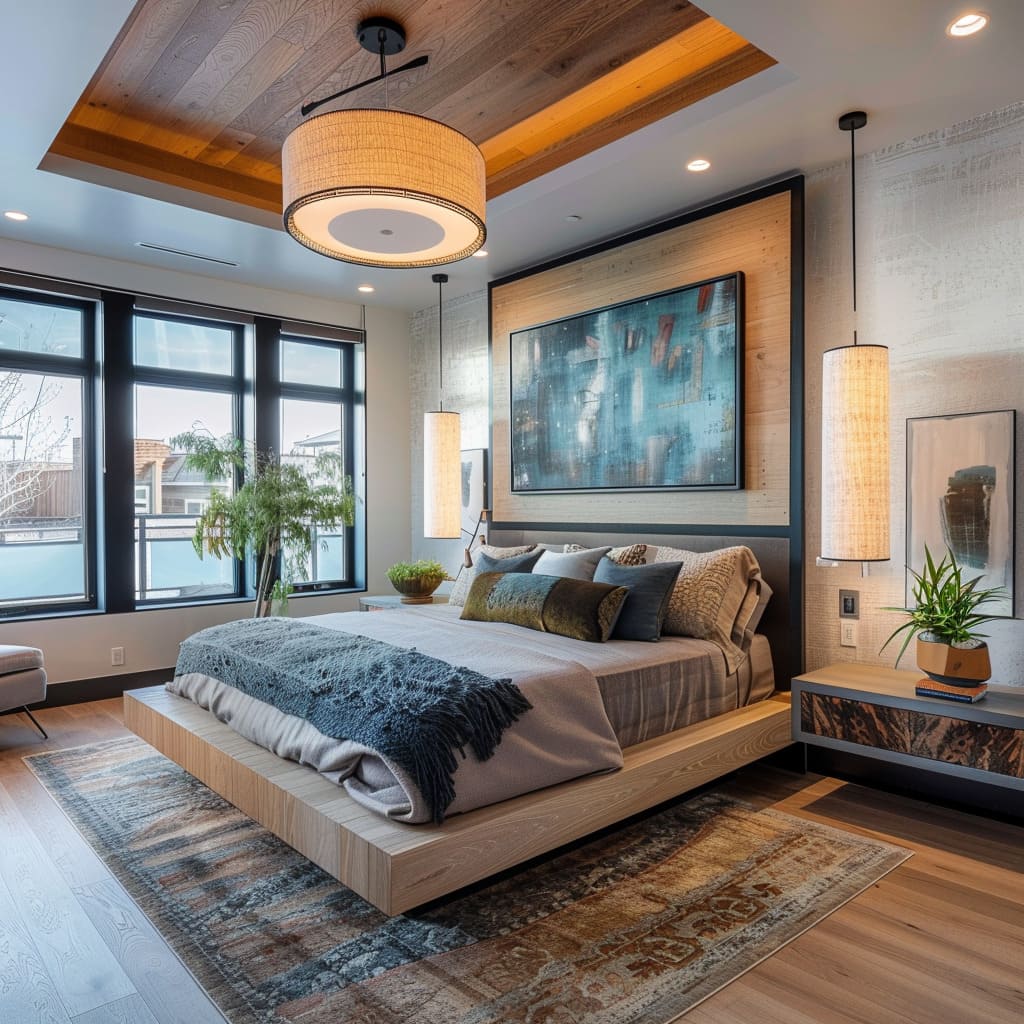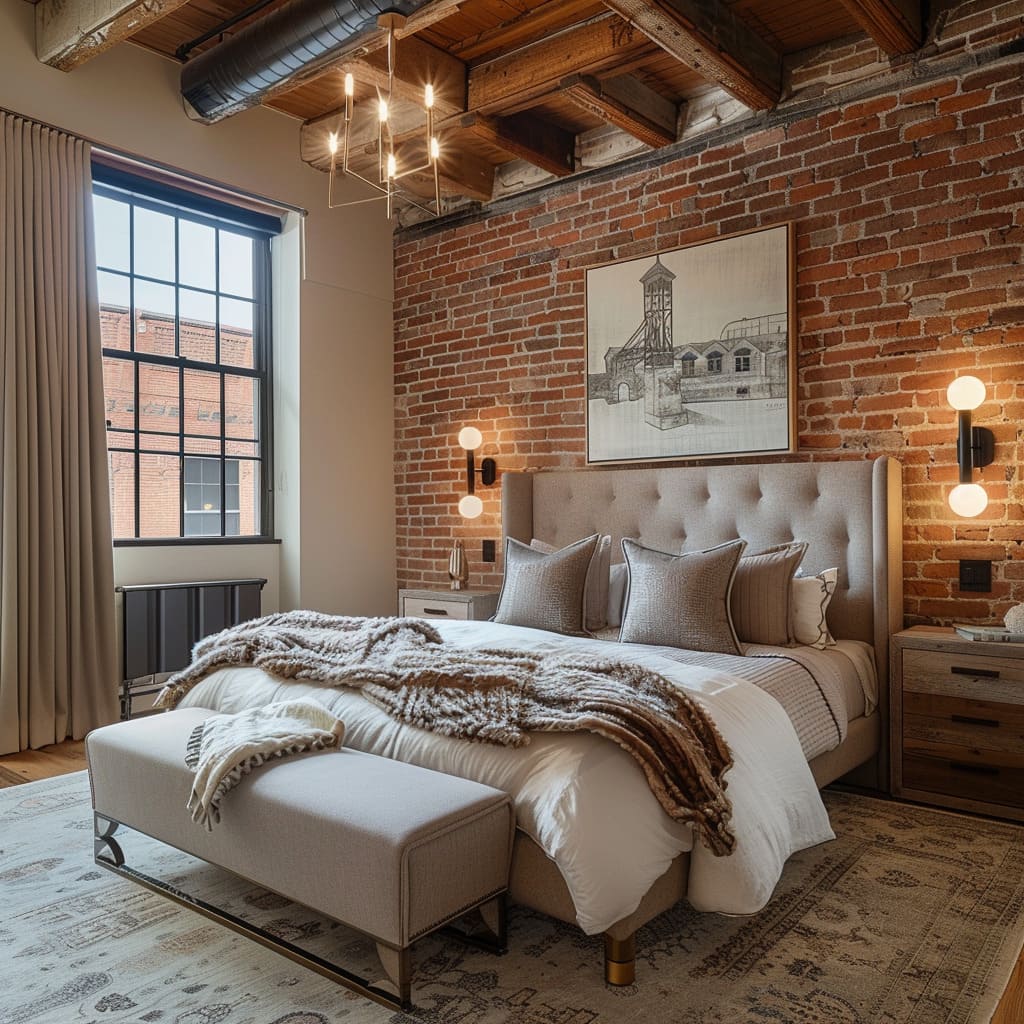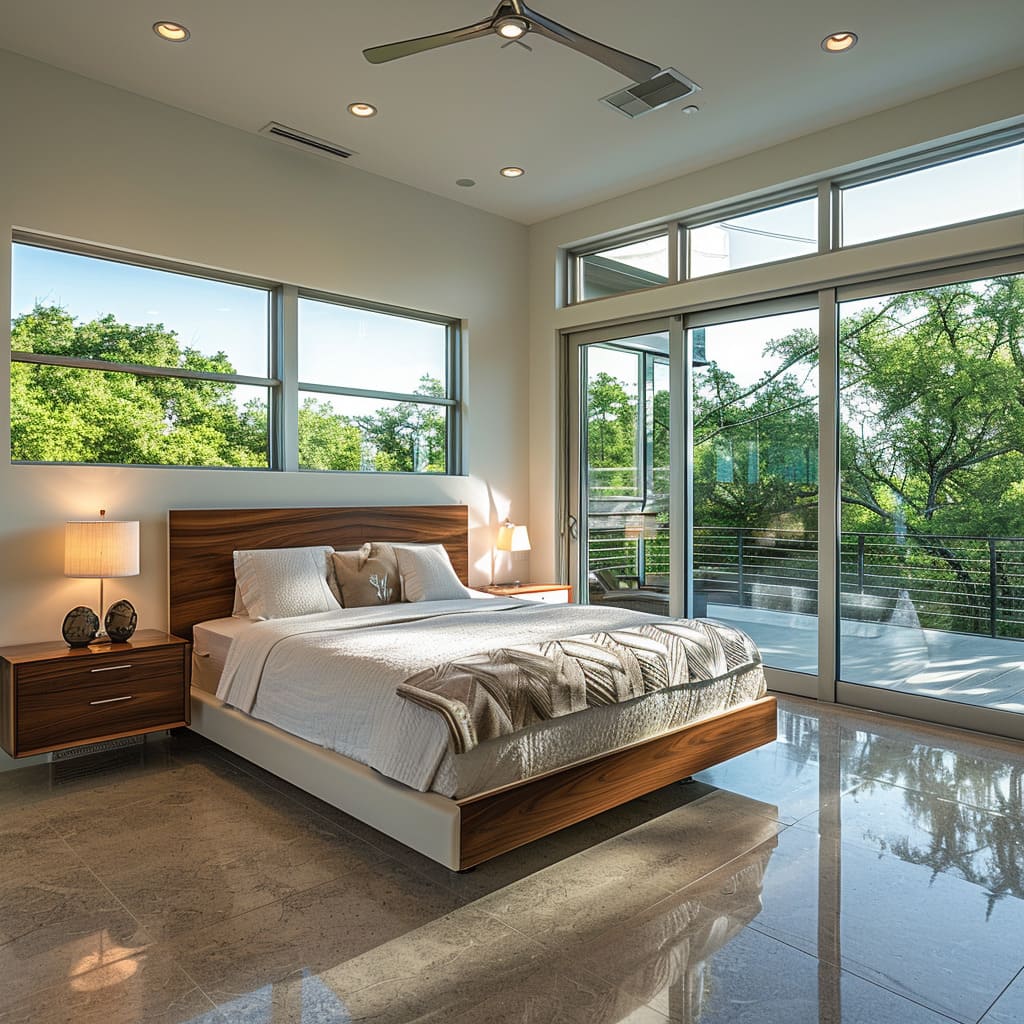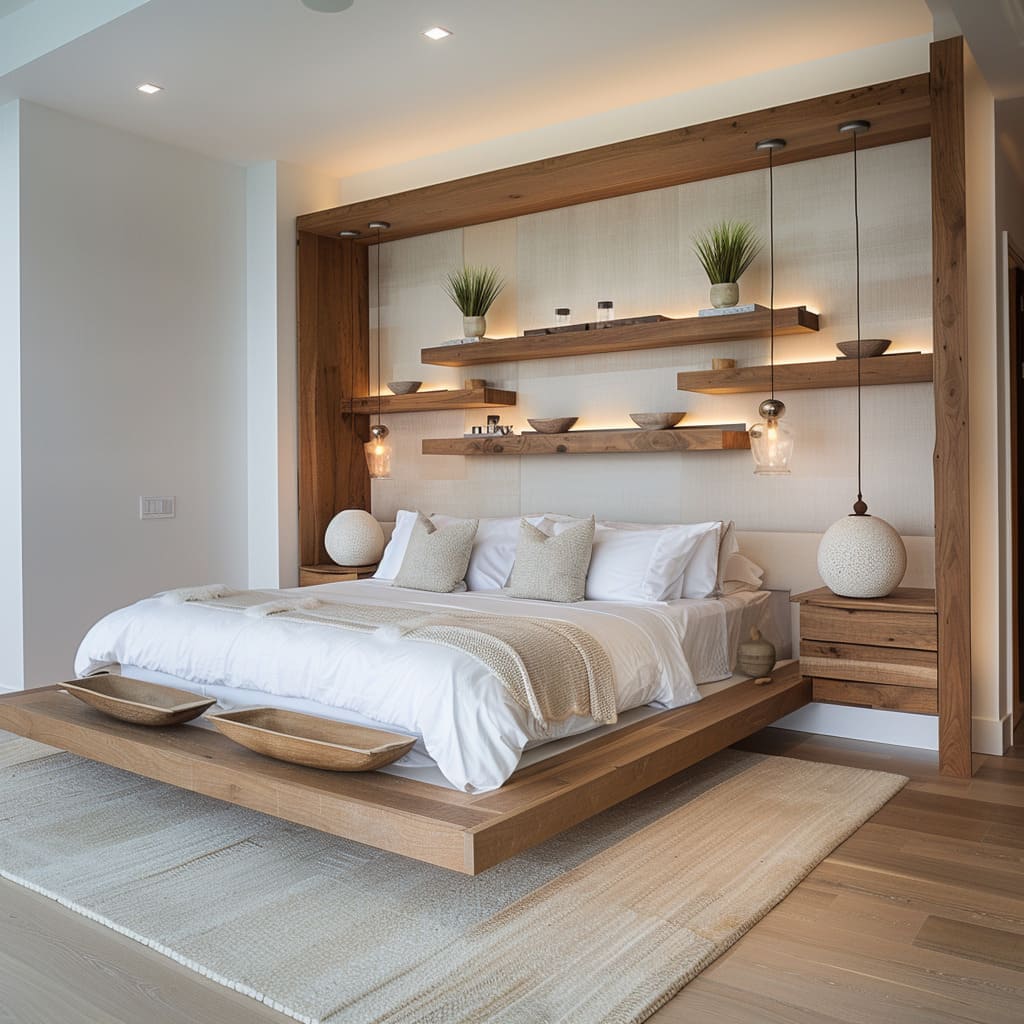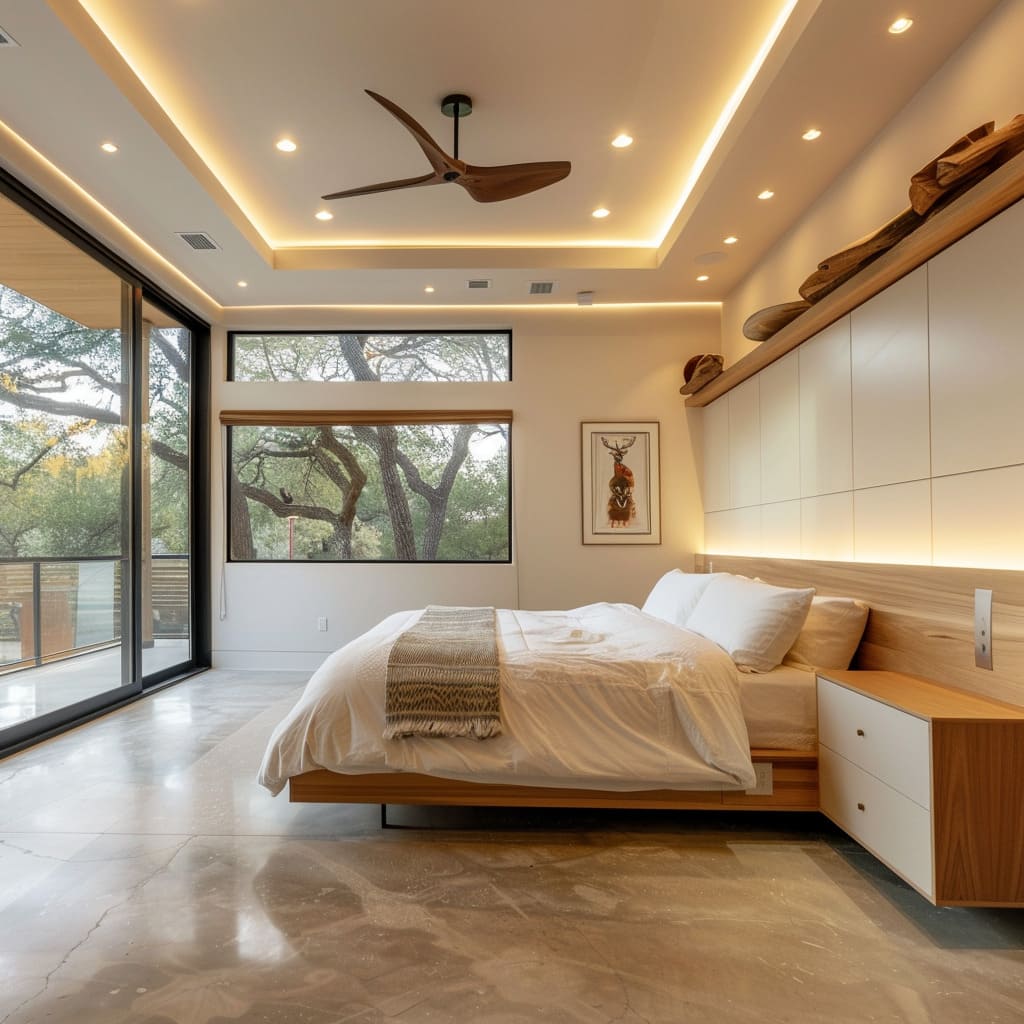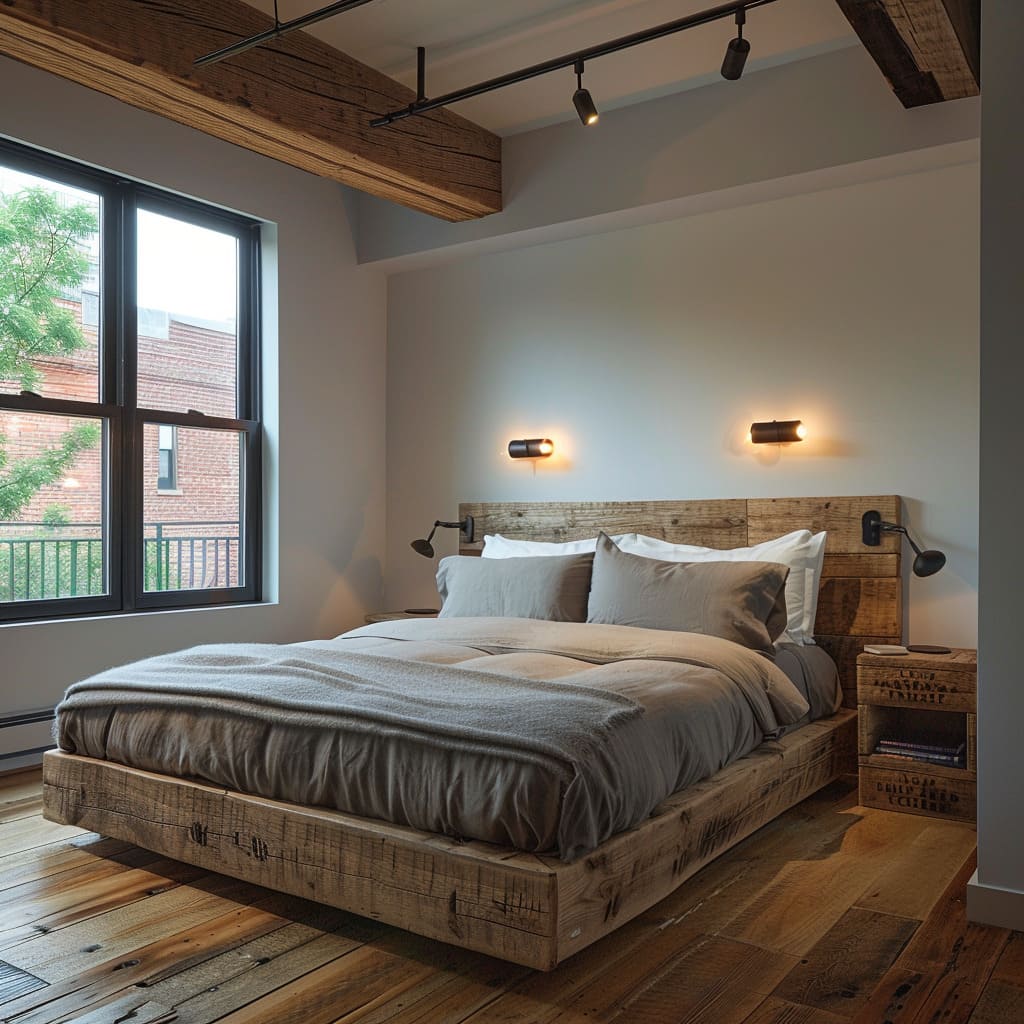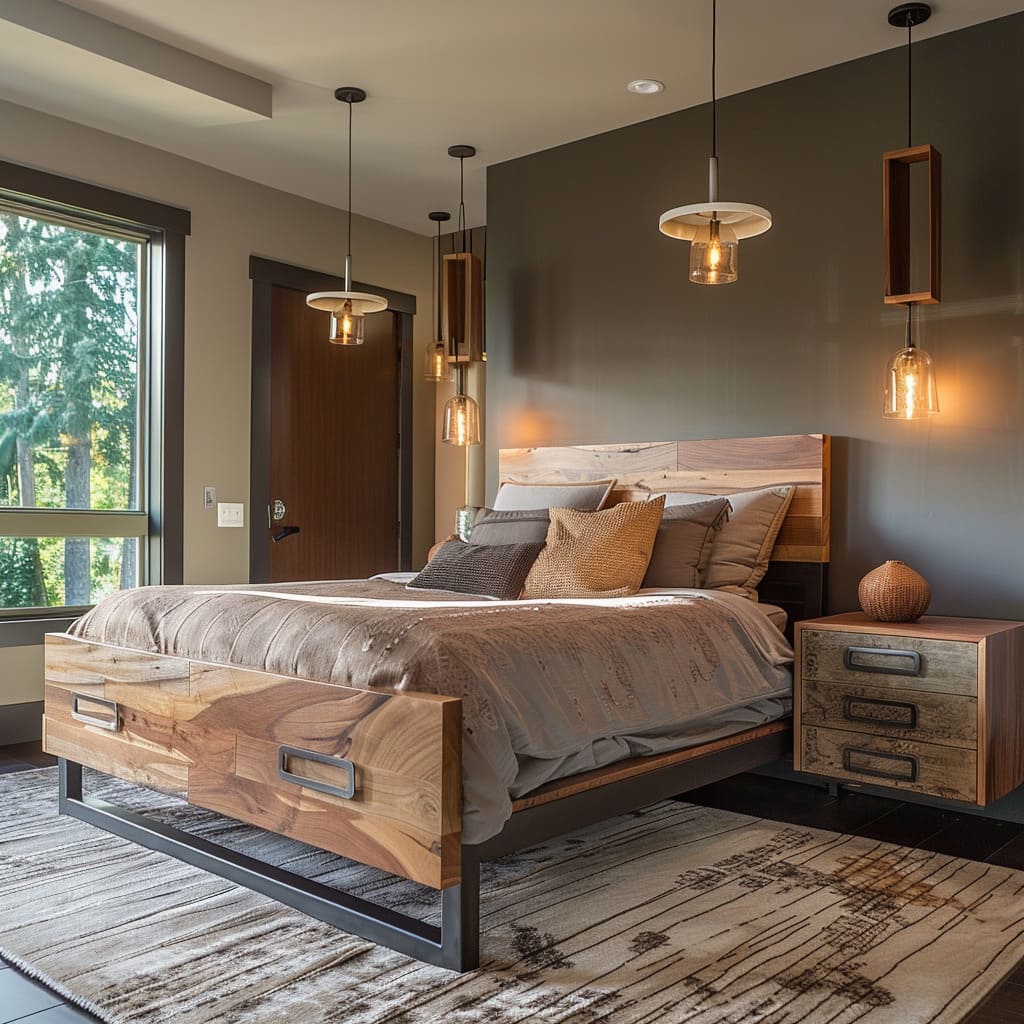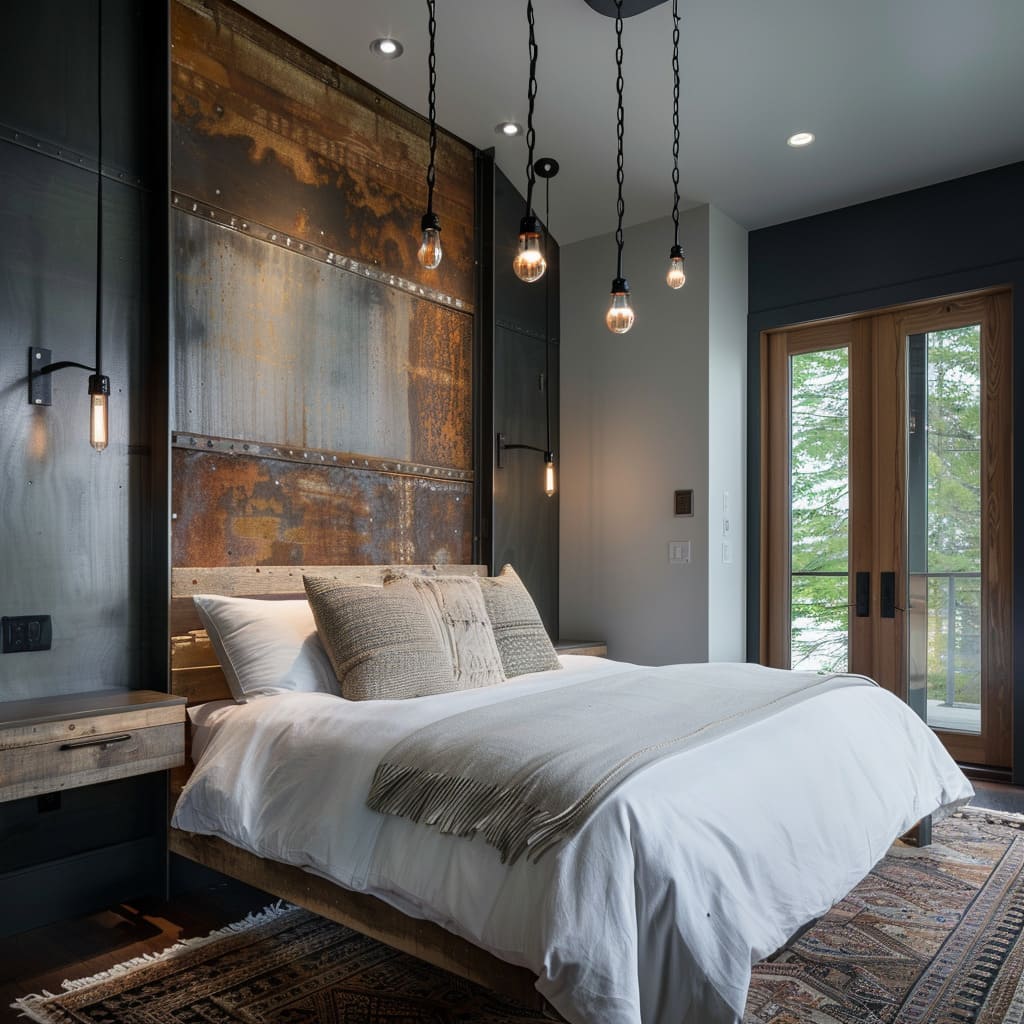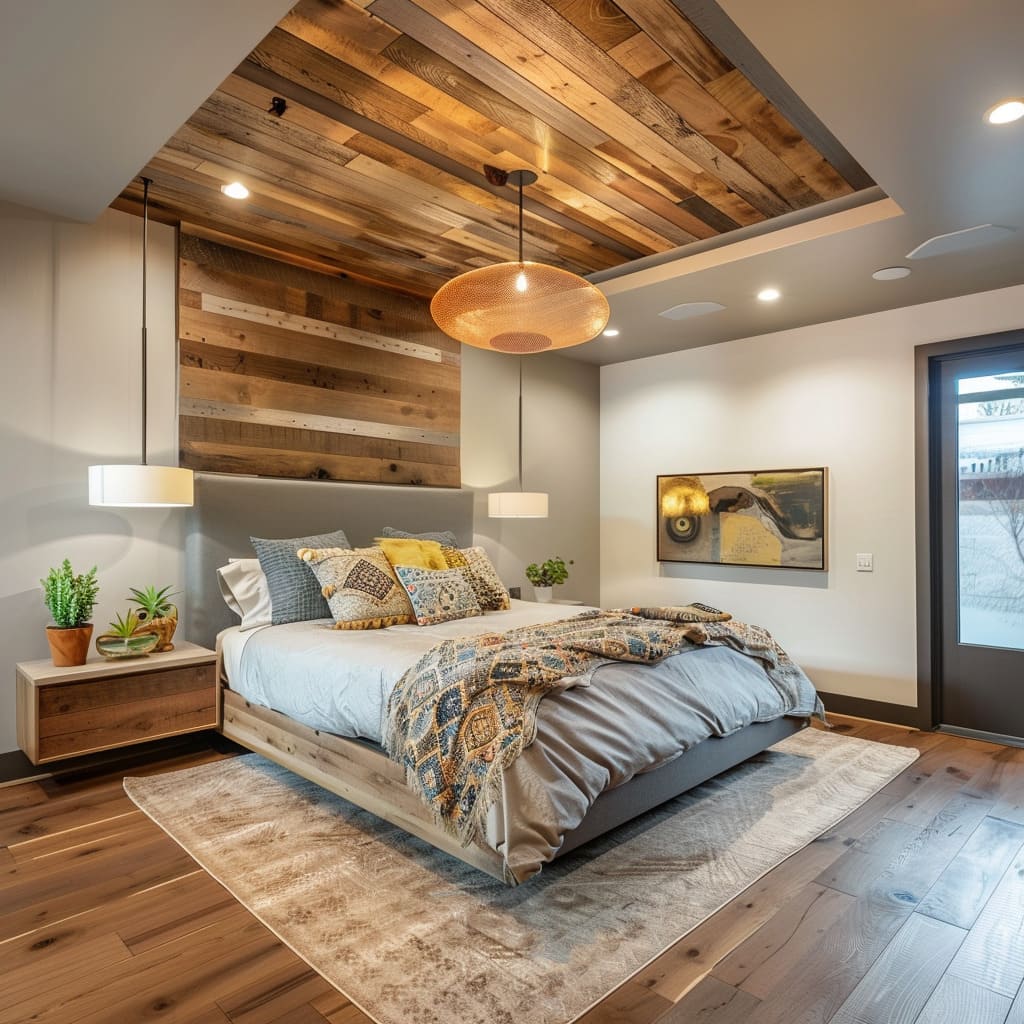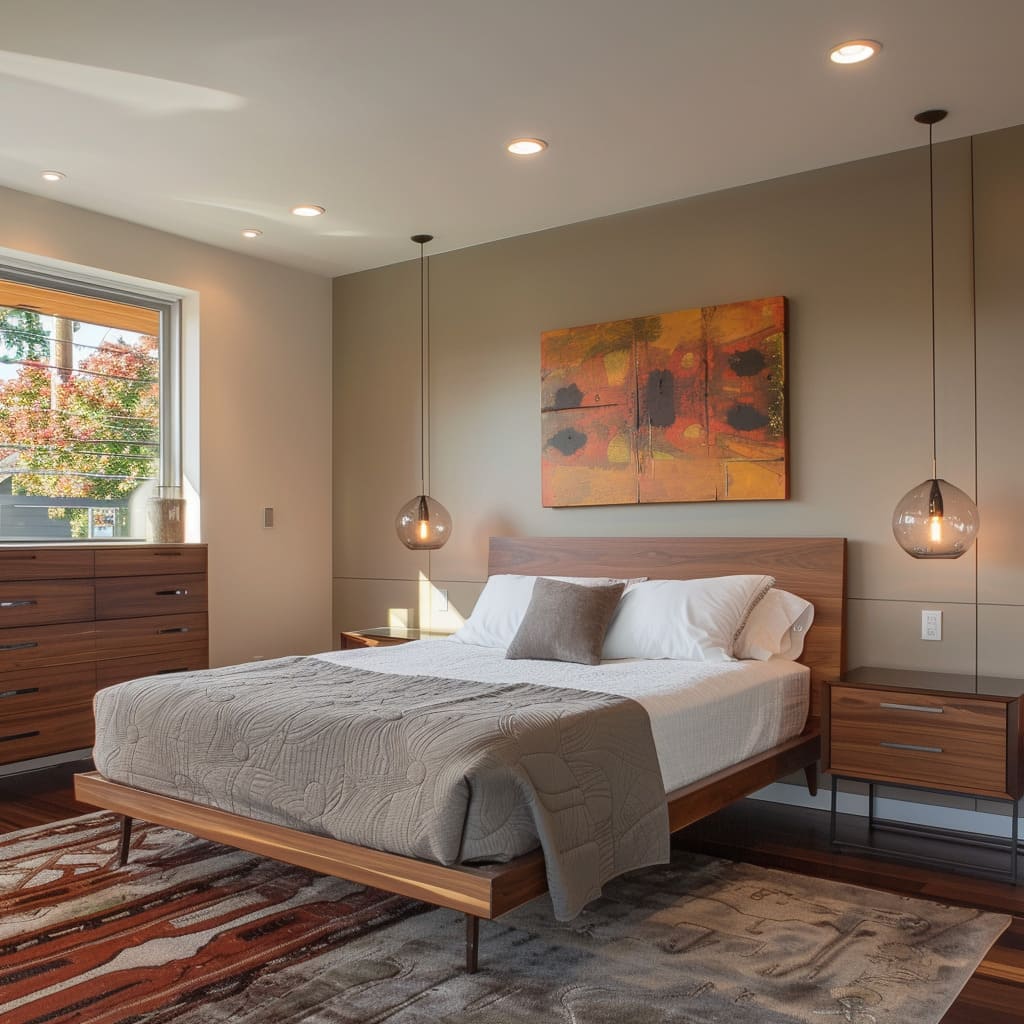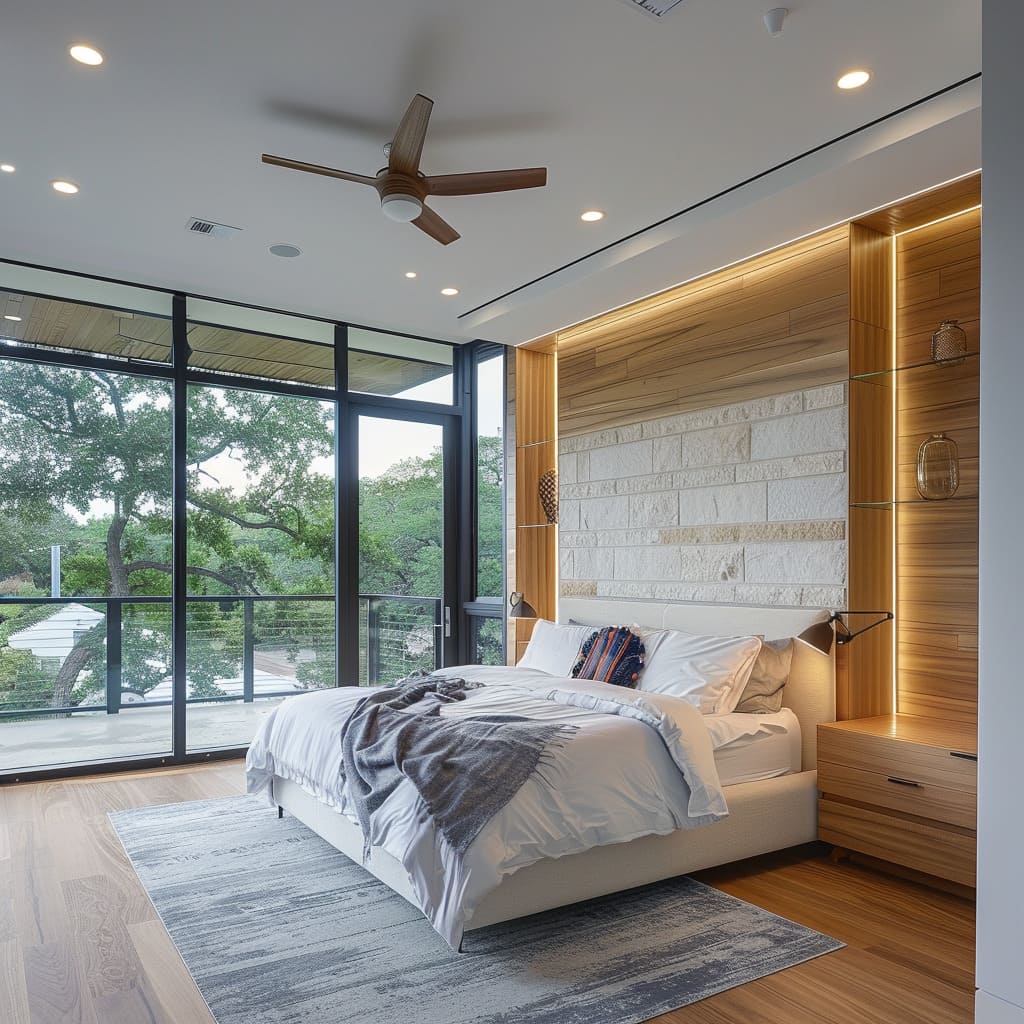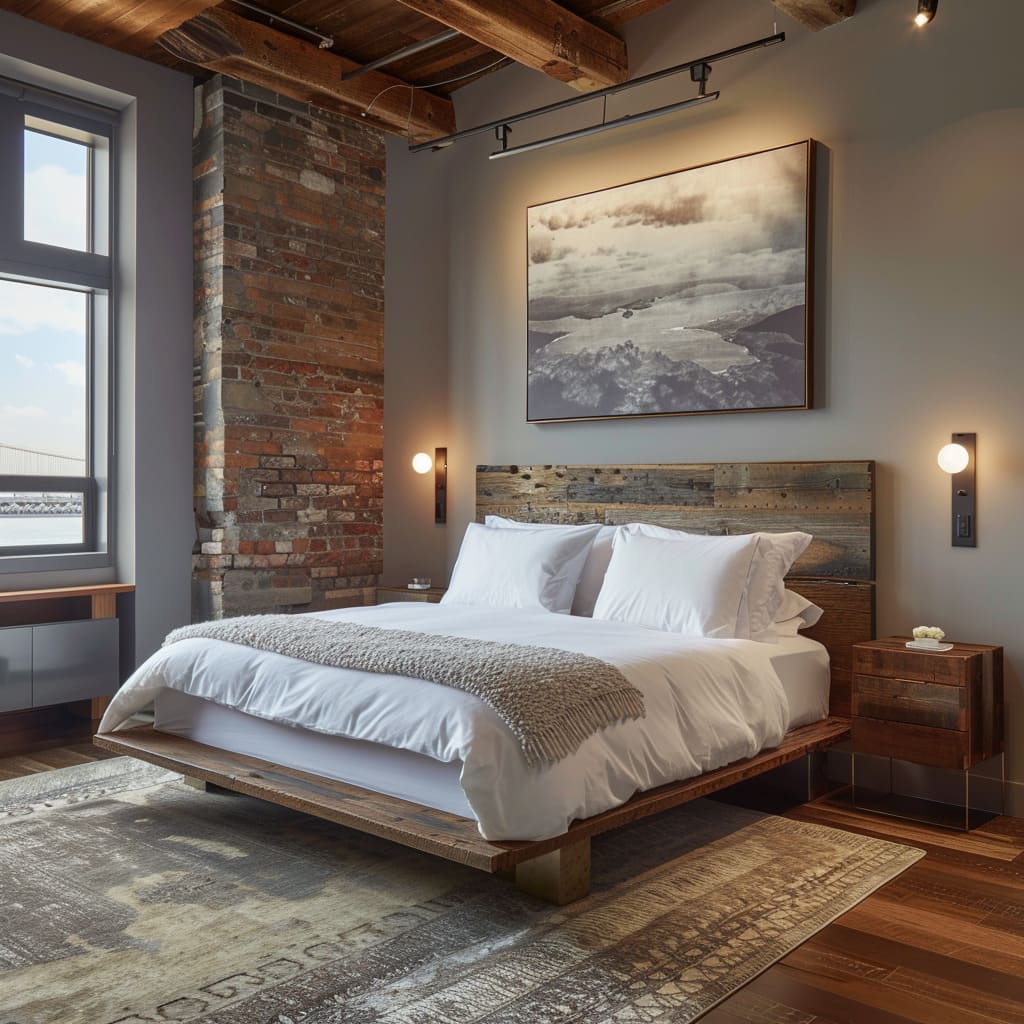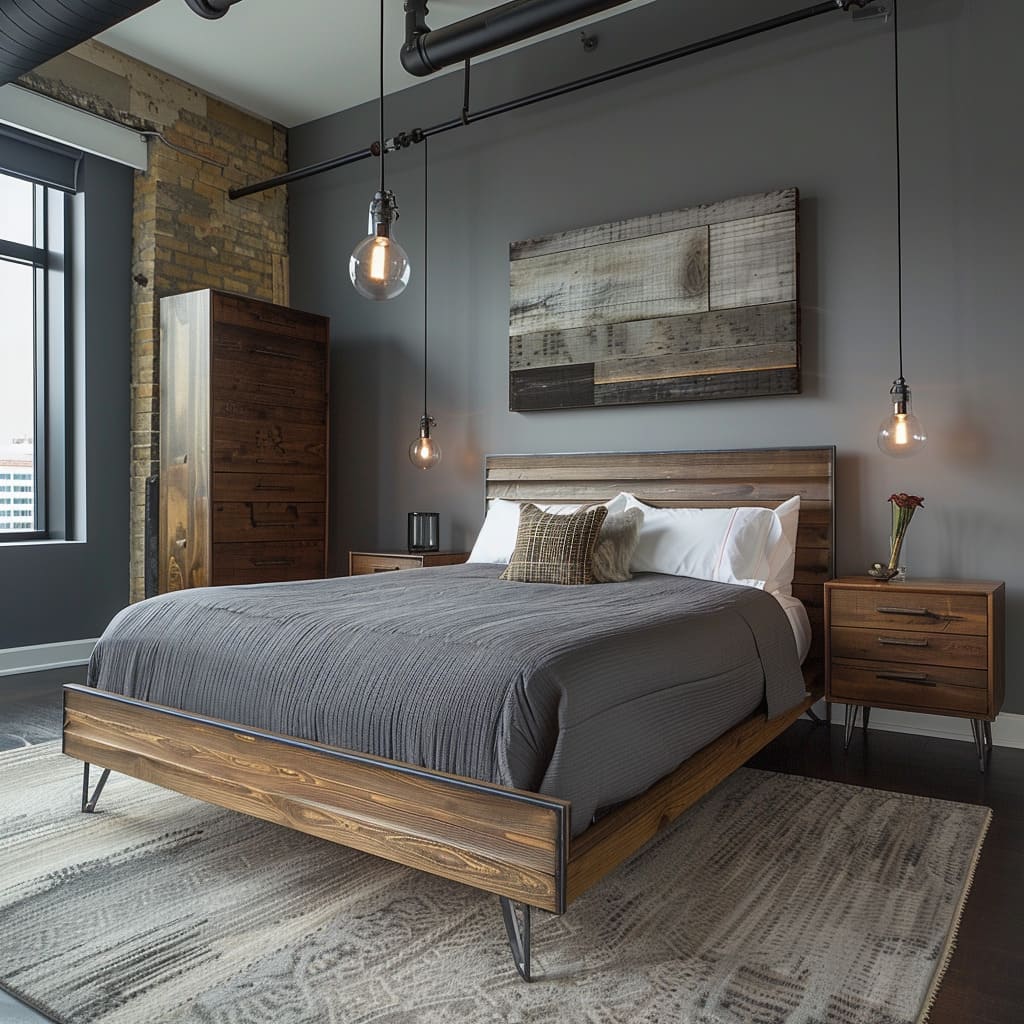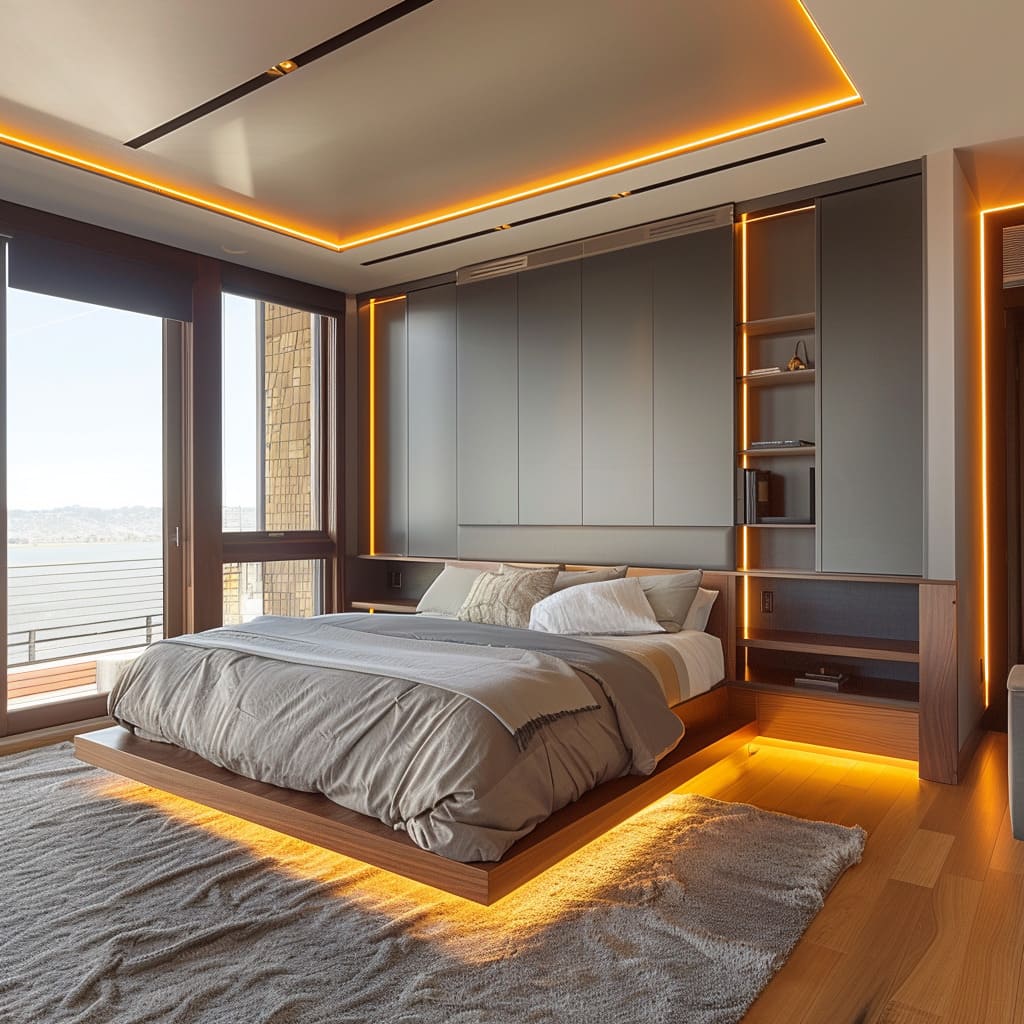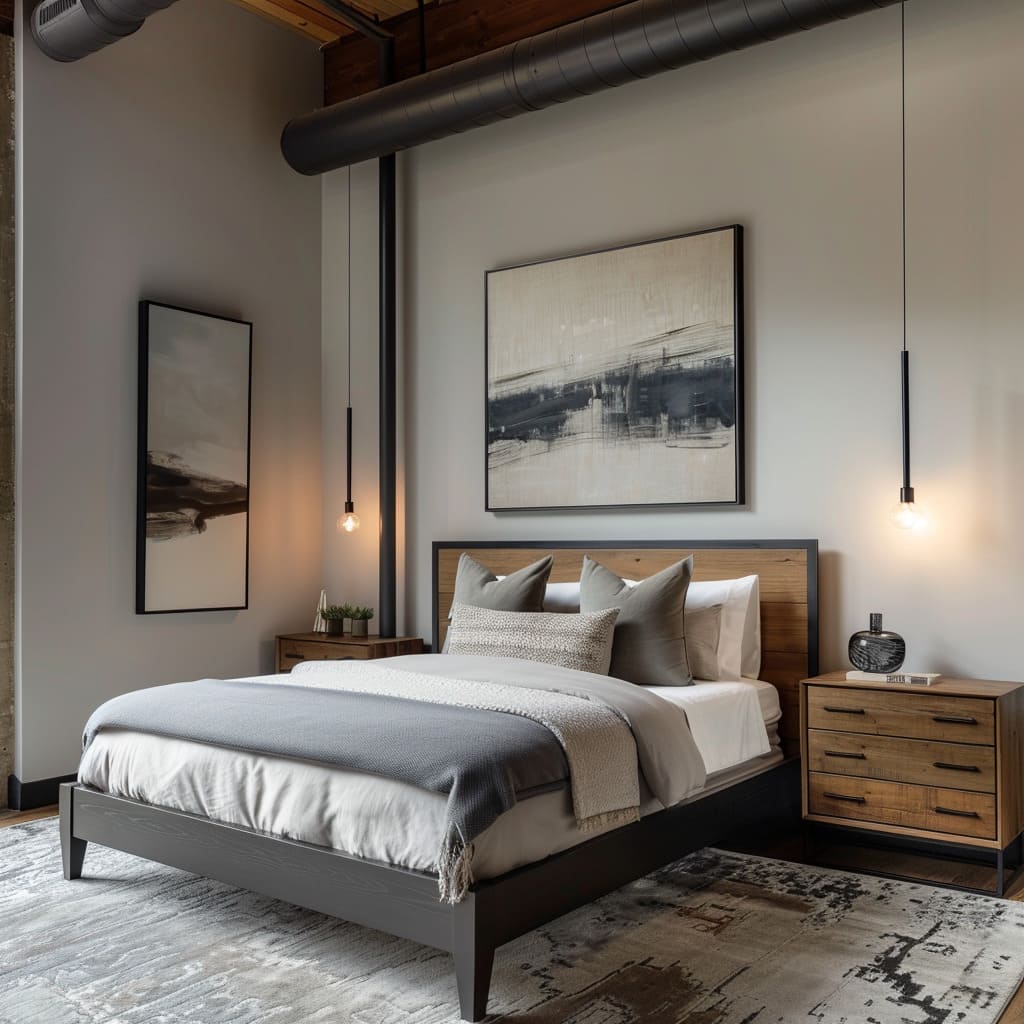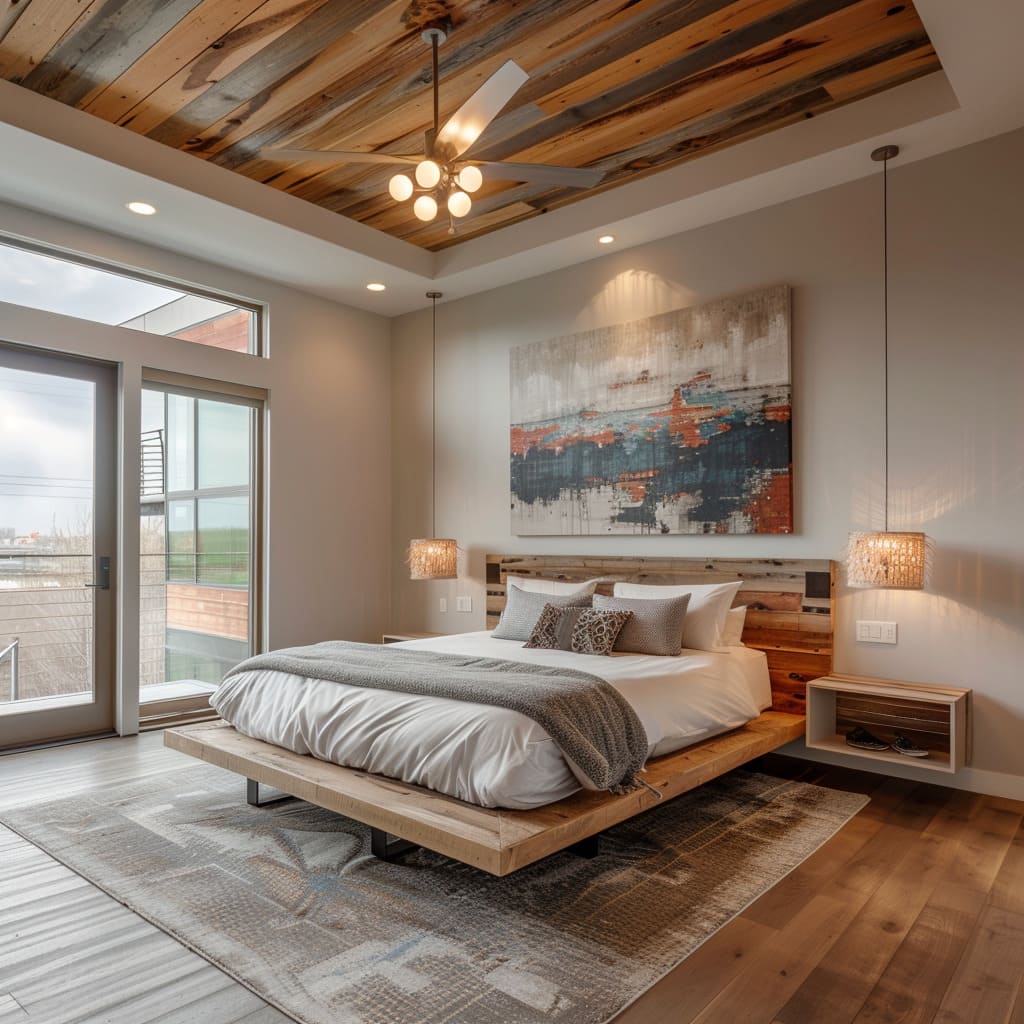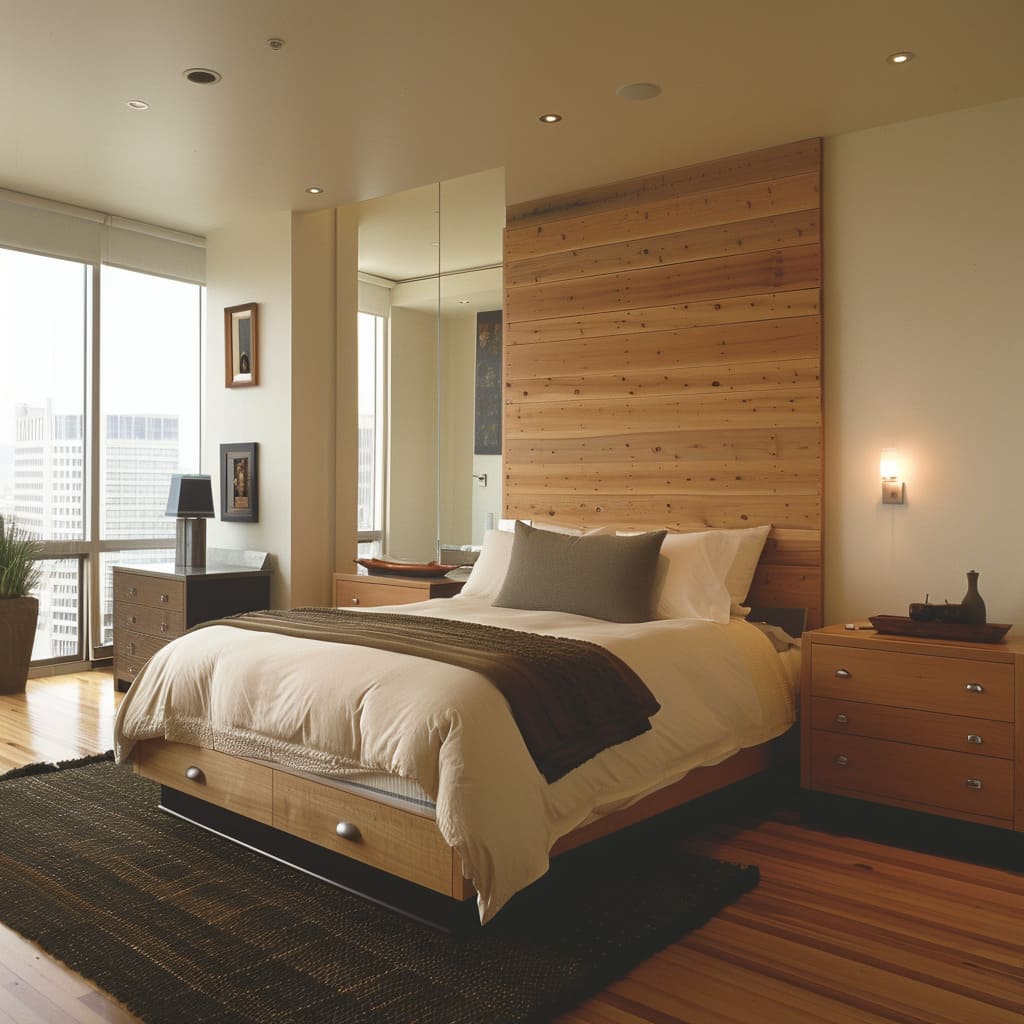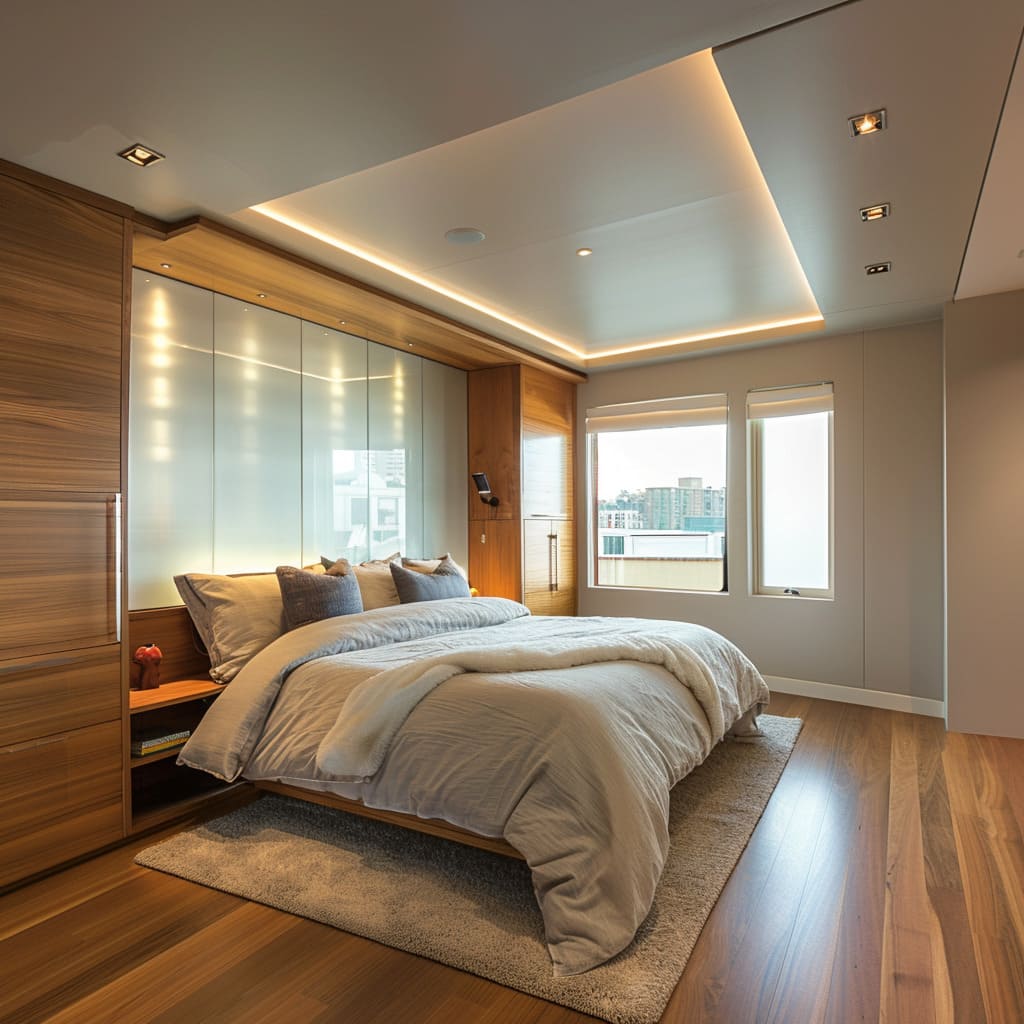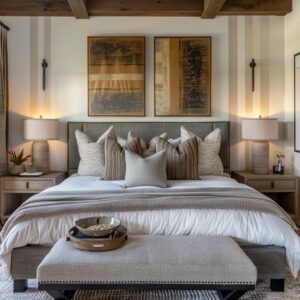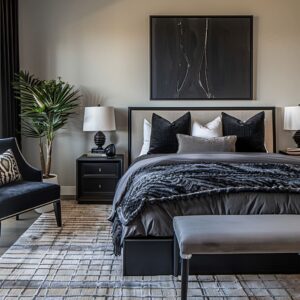Introduction Eco-luxury interior design blends elegance with sustainability, creating a space that is both stylish and environmentally friendly. This article explores the principles of eco-luxury design and provides detailed insights into remodeling a typical American master bedroom to reflect these values.
The focus is on natural materials, modern aesthetics, and thoughtful design choices that promote comfort and sustainability.
Key Elements of Eco-Luxury Interior Style
Natural Materials
The foundation of eco-luxury design lies in the use of natural, sustainably sourced materials. Reclaimed wood, organic cotton, stone, and metal are key components. Reclaimed wood, in particular, brings character and warmth, while reducing environmental impact.
Organic cotton and eco-friendly fabrics contribute to a healthier indoor environment. These materials, when thoughtfully integrated, create a cohesive and inviting space.
Modern Aesthetics
Eco-luxury design embraces clean lines and minimalist decor, ensuring that each element serves a purpose. Modern technology is seamlessly integrated, enhancing both functionality and aesthetics. The result is a space that feels open, uncluttered, and sophisticated.
This approach emphasizes quality over quantity, with each piece carefully selected to complement the overall design.
Harmonious Color Palette
A soothing color palette is essential in eco-luxury design. Neutral tones such as beige, taupe, and soft white dominate, creating a calming atmosphere. These colors are accented by natural hues found in wood, stone, and fabrics.
The use of textures and minimal decorative elements adds depth and interest without overwhelming the senses.
Designing the Bed and Headboard
Sustainable Bed Frame Choices
The bed is the centerpiece of any master bedroom, and in an eco-luxury design, it should reflect sustainability and style. A platform bed crafted from reclaimed wood or sustainably sourced materials is an excellent choice. These beds not only support sustainable practices but also bring a natural, warm aesthetic to the room.
The low-profile design enhances the modern feel, making the space look sleek and well-organized.
Headboard Styles
Headboards in an eco-luxury bedroom can vary from upholstered designs to wooden panels. Upholstered headboards should use eco-friendly fabrics such as organic cotton or linen. These materials provide a soft, luxurious feel while maintaining environmental integrity.
Wooden headboards, particularly those with live-edge details, highlight the beauty of natural materials. The combination of wood and fabric adds a rich texture to the room.
Selecting Eco-Friendly Bedding
Organic Linens
High-thread-count organic cotton linens are a staple in eco-luxury bedrooms. These linens are soft, breathable, and free from harmful chemicals. Choosing organic bedding not only ensures comfort but also supports sustainable farming practices.
The neutral color of the linens complements the overall aesthetic, enhancing the room’s inviting atmosphere.
Comfort and Texture
Layering different textures adds depth and comfort to the bedding arrangement. A knitted throw or a faux fur blanket draped over the bed provides warmth and style. These elements should be in neutral tones to maintain harmony with the rest of the decor.
Decorative pillows in various sizes and textures, from soft cotton to chunky knits, further enhance the cozy feel of the bed.
If you enjoyed learning about transforming your master bedroom into a sustainable sanctuary, you might be interested in exploring eco-friendly living rooms in Japandi style. Discover how to achieve minimalist elegance with natural materials and harmonious design by visiting our blog on Japandi Style Home Decor Essentials.
Innovative Lighting Solutions
Energy-Efficient Lighting
Lighting plays a crucial role in eco-luxury design. LED lighting is both energy-efficient and versatile, making it ideal for this style. Recessed lighting provides even illumination throughout the room, highlighting key areas without creating harsh shadows.
This type of lighting is also adjustable, allowing for different levels of brightness based on the time of day and the desired ambiance.
Ambient and Task Lighting
Soft ambient lighting creates a warm, inviting atmosphere. Integrated LED strips behind headboards or under shelving can cast a gentle glow, enhancing the room’s natural textures. Task lighting, such as bedside lamps or wall-mounted reading lights, should be minimalist in design but highly functional.
These lights provide focused illumination for reading or other activities, adding both practicality and style to the space.
Choosing Flooring and Area Rugs
Natural Flooring Materials
The choice of flooring significantly impacts the room’s overall feel. Wide-plank hardwood flooring in a natural finish is a popular choice in eco-luxury design. The wood’s grain and texture add warmth and character, complementing the other natural elements in the room.
Polished stone tiles are another option, offering a modern, reflective surface that enhances natural light.
Adding Comfort with Rugs
A large area rug can anchor the room, providing a soft surface underfoot and adding visual interest. Rugs made from natural fibers such as wool, jute, or sisal are excellent choices. These materials are sustainable and durable, contributing to the room’s eco-friendly ethos.
The rug’s design should be subtle, with muted patterns or solid colors that enhance the overall decor.
Try out our Home Renovation and Remodel Cost Calculator to get a rough estimate of the costs involved in an eco-friendly bedroom makeover.
Enhancing Walls and Windows
Wall Treatments
Walls play a crucial role in defining the room’s character. Exposed brick adds an industrial touch, bringing texture and warmth to the space. Alternatively, walls can be painted in soft, neutral colors to create a calm backdrop.
Using eco-friendly paints ensures that the air quality remains high, free from harmful chemicals and VOCs.
Maximizing Natural Light
Large windows are essential in eco-luxury design, as they allow natural light to flood the room. Sliding glass doors or floor-to-ceiling windows enhance the connection between indoor and outdoor spaces. These windows should be complemented with minimalist window treatments, such as sheer curtains or roller shades, which provide privacy without blocking light.
Incorporating Accessories and Decor
Functional and Stylish Nightstands
Nightstands in an eco-luxury bedroom should combine functionality with style. Reclaimed wood or metal accents can add character and durability. Nightstands with drawers and open shelves offer practical storage solutions while maintaining a minimalist look.
The design should be simple yet elegant, fitting seamlessly with the rest of the decor.
Minimalist Decor
Decorative objects should be carefully selected to add personality without creating clutter. Small ceramic vases, modern sculptures, and potted plants can add interest and texture. These items should be arranged thoughtfully, ensuring that each piece enhances the overall aesthetic.
The goal is to create a space that feels curated and intentional.
Ceiling Design and Sustainability Features
Ceiling Treatments
The ceiling is often overlooked but can be a significant design element. Exposed wooden beams and ductwork add an industrial touch, creating visual interest. Recessed lighting can highlight these features, adding depth and warmth.
Using eco-friendly materials for ceiling construction aligns with the room’s sustainable ethos.
Commitment to Sustainability
Every aspect of the design should reflect a commitment to sustainability. This includes using eco-friendly paints, sustainably sourced materials, and energy-efficient lighting. Large windows reduce the need for artificial lighting, while LED lights minimize energy consumption.
These choices not only benefit the environment but also create a healthier living space.
Conclusion
Eco-luxury interior design combines natural materials, modern aesthetics, and sustainable practices to create a stylish and environmentally friendly space. By integrating these elements, a typical American master bedroom can be transformed into a sustainable sanctuary.

